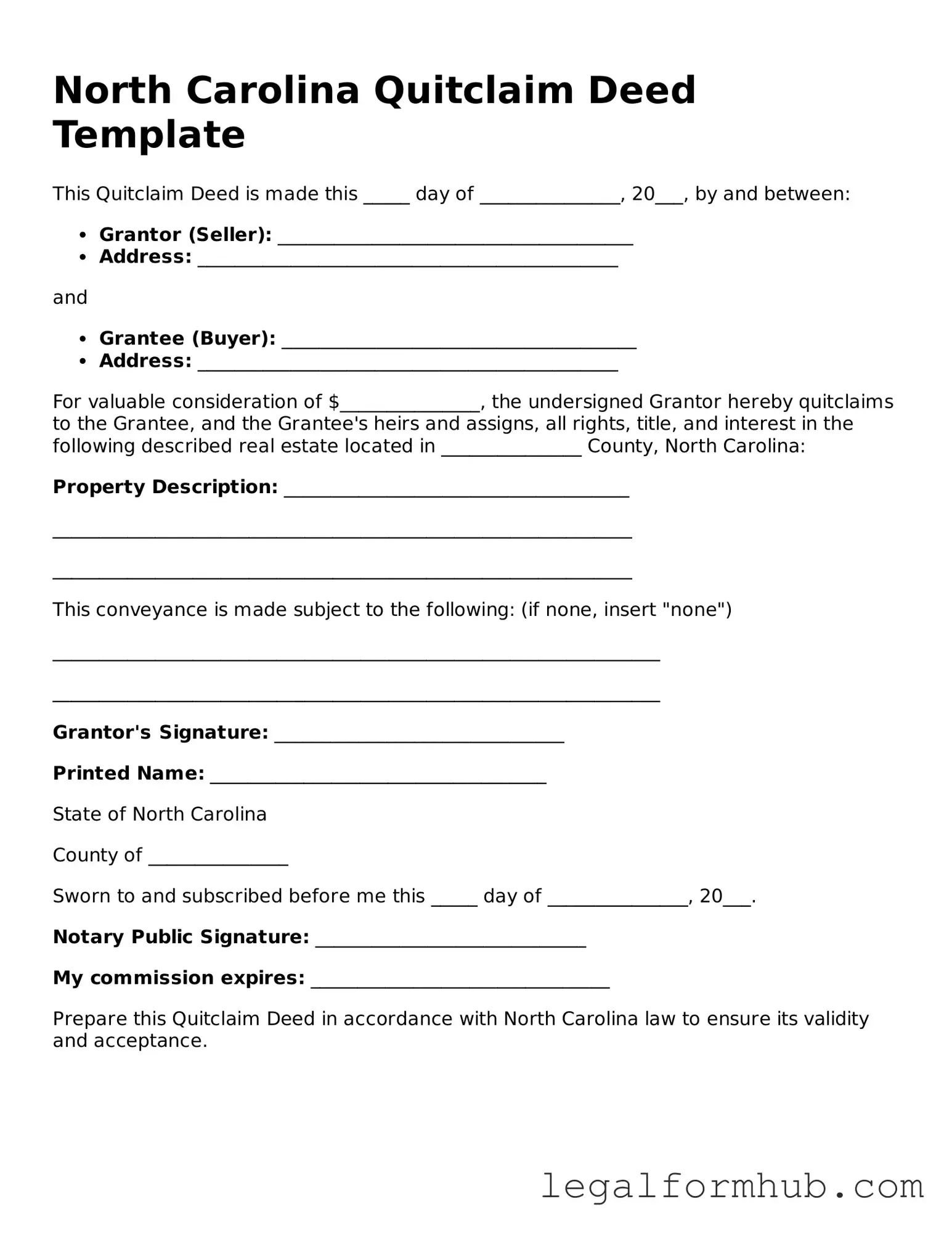A warranty deed serves a similar purpose to a quitclaim deed but offers a higher level of protection for the buyer. In a warranty deed, the seller guarantees that they hold clear title to the property and have the right to sell it. This means that if any issues arise regarding ownership or claims against the property, the seller is legally responsible for resolving them. The assurance provided by a warranty deed can be crucial for buyers who want to ensure their investment is secure.
Another document that bears resemblance to the quitclaim deed is the bargain and sale deed. This type of deed implies that the seller has the right to transfer the property but does not provide any warranties against encumbrances. While it may not offer the same level of protection as a warranty deed, it still indicates that the seller has a claim to the property. Buyers should be cautious, as the lack of guarantees means they assume more risk in the transaction.
A special warranty deed is also similar to a quitclaim deed, though it offers a limited warranty. In this document, the seller guarantees that they have not encumbered the property during their ownership. However, it does not protect against any claims that may have arisen before the seller acquired the property. This type of deed can provide some assurance to buyers, but it is essential to understand the limitations it carries.
When navigating property ownership and potential eviction scenarios, understanding legal documents is crucial. For instance, the Arizona Notice to Quit is a vital form that landlords use to notify tenants of the need to vacate. This form can clarify intentions and provide necessary timelines, ensuring all parties are aware of their rights and responsibilities, which can be further understood through resources such as arizonapdfs.com/notice-to-quit-template.
Additionally, a deed of trust, while primarily a security instrument, shares similarities with a quitclaim deed in that it transfers interest in property. In a deed of trust, the borrower conveys the property to a trustee as security for a loan. If the borrower defaults, the trustee can sell the property to satisfy the debt. Although it serves a different function, the act of transferring property rights is a common thread between these documents.
Finally, a leasehold deed can also be compared to a quitclaim deed in terms of transferring rights. A leasehold deed conveys the right to use and occupy a property for a specified period. While it does not transfer ownership in the same way a quitclaim deed does, it reflects a temporary interest in the property. Understanding the nuances of these documents is crucial for anyone involved in real estate transactions.
